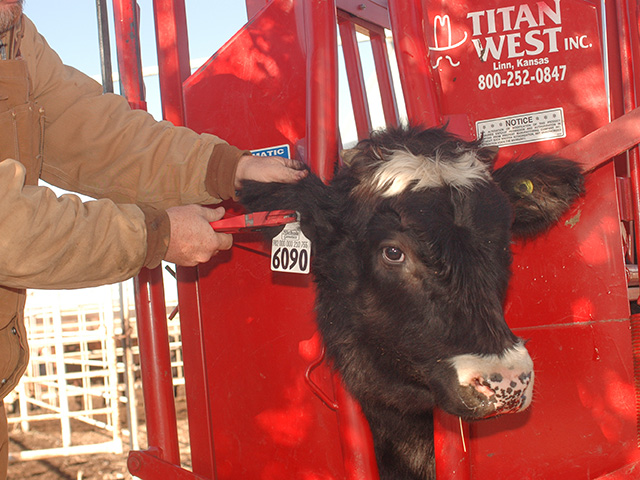Livestock Safety Considerations
Facilities, Handling Animals Important Topics of Livestock Safety
OMAHA (DTN) -- While livestock producers work with their animals quite often, they should always follow certain safety practices. Proper equipment and facilities are important and so is knowing how to correctly handle and move animals safely and efficiently.
These topics were covered in a recent Livestock Safety webinar as part of the North Dakota State University Extension and University of Minnesota Extension Farm Safety Webinar Series (https://www.youtube.com/…). The livestock safety webinar is the fourth of five webinars planned through March.
FACILITIES IMPORTANT
Livestock safety can be divided into main areas such as working with equipment/facilities and handling the animals, according to veterinarian Joe Armstrong, an Extension educator in cattle production systems at the University of Minnesota. While producers have probably been around livestock for many years, it is always good to remember safety around livestock.
Within facilities, producers need to consider working with gates. Where a producer stands is important since standing right behind a gate is dangerous if livestock slam against the gate and make it fly back rapidly.
Armstrong recommended those operating the gates stand on the side of it to avoid injures. A quick-close latch is a useful tool on gates, he said.
Livestock producers need to keep pinch points in mind when working with livestock. Hands, arms, legs and fingers can be caught between livestock and hard surfaces. A cattle alleyway has the most pinch points, he noted.
HOW CHUTES OPERATE
Chutes provide safety for both livestock and the people working the animals. Producers need to remember not to stand right over livestock in a chute because they can raise up and injure the person.
P[L1] D[0x0] M[300x250] OOP[F] ADUNIT[] T[]
Chute operators who give vaccination shots need to stand off to the side of the chute. Certain chutes, such as scissor chutes, can injure people standing too close when the chute is operated.
"Know how chutes work before using them," Armstrong advised.
Armstrong said a facility's design should be well thought out. Producers should consider researching Temple Grandin systems or Bud Box Stockmanship if they are considering building new livestock handling facilities, he said.
Ropes and halters are important tools often overlooked for working with livestock. These are underrated pieces of safety equipment, he said. They can control the head of the animal and can act as secondary restraint.
Armstrong recommended producers hold ropes and halters correctly when using these tools. If there is extra slack, do not loop the extra rope around hands or arms, as this could lead to entanglement issues.
HANDLE WITH CAUTION
The other main area of livestock safety and important consideration is handling livestock in a safe and low-stress manner.
Armstrong said those handling livestock should use caution, but not be fearful. Producers should always have a way or two out of pens, never work livestock alone and always evaluate the situation before handling livestock.
Producers need to build trust with livestock and understand the predator/prey relationship. Those handling livestock need to have positive attitude and demeanor, he said.
Armstrong said livestock producers should understand pressure and release: pressure for livestock to move somewhere and release once they move. Cattle want clear and calm directions, he explained. Those handling livestock need to maintain contact with the herd from the front, not the back.
Proper low-stress handling will limit most issues when moving livestock, he said. Handlers should be constantly vigilant and should never trust bulls or dams with strong instincts.
HANDLING PET PEEVES
Armstrong said among his pet peeves is putting pressure on animals with nowhere for them to go or putting pressure on livestock already moving. The phrase is pressure and release -- both need to be utilized, he emphasized.
"You give pressure, then you take the pressure off when you get the response you need," he said.
For livestock producers who handle livestock and it feels like more of a rodeo than working animals, they should examine both their facilities and practices. Handling livestock should never feel this way, he said.
Sticks and paddles should only be used to maintain distance and control. Cattle prods should only be a last resort, Armstrong said.
Russ Quinn can be reached at russ.quinn@dtn.com
Follow him on Twitter @RussQuinnDTN
(c) Copyright 2021 DTN, LLC. All rights reserved.






